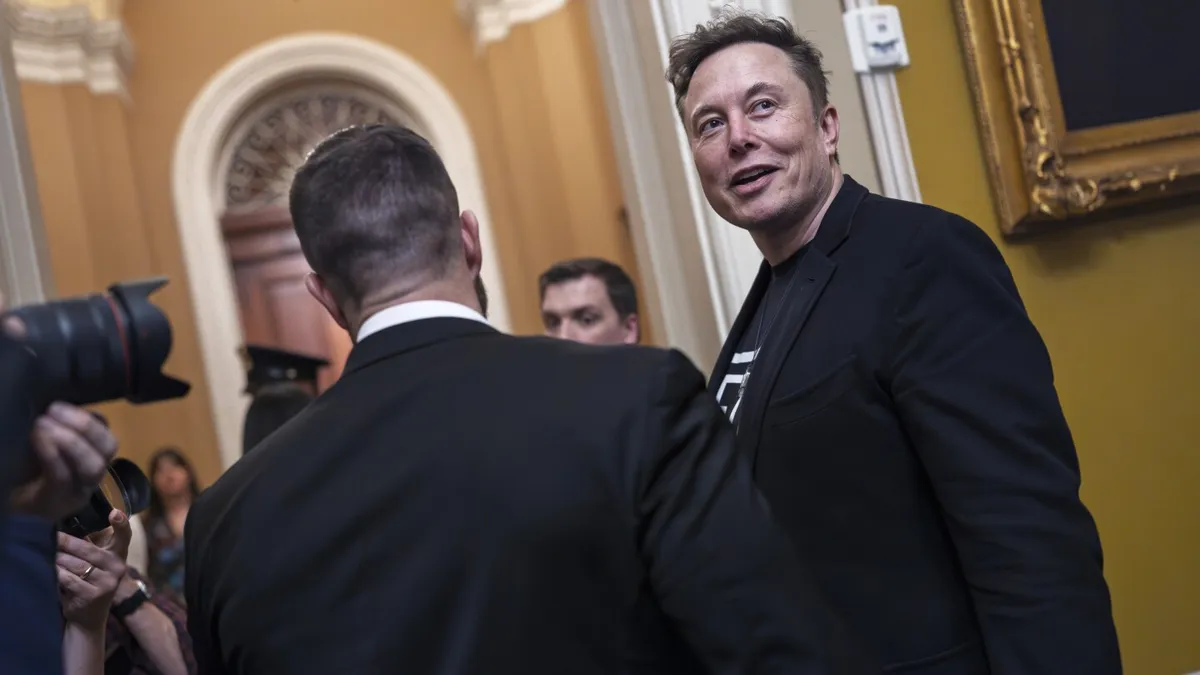
Billionaire entrepreneur Elon Musk is clarifying his role in the recent firings of thousands of federal workers, including veterans, amidst ongoing efforts to downsize the government. In private discussions with Republican lawmakers this week, Musk emphasized that he is not responsible for these layoffs, which he claims are decisions made by individual federal agencies.
This message was conveyed as Musk, a prominent adviser in former President Donald Trump's administration, faces scrutiny from Republican lawmakers. While publicly backing Musk's efforts at the newly established Department of Government Efficiency (DOGE), which aims to identify waste, fraud, and abuse within government spending, some Republicans are expressing concerns about the personnel cuts impacting communities nationwide.
Rep. Richard Hudson, R-N.C., who leads the House Republicans' campaign arm, stated after a dinner meeting with Musk, “Elon doesn’t fire people. He doesn’t have hiring and firing authority.” He further explained that Musk's role is to uncover information rather than make personnel decisions directly.
Following a Cabinet meeting, President Trump commented on the situation, instructing department secretaries to collaborate with DOGE while ensuring a careful approach to workforce reductions. He stated, “We say the ‘scalpel’ rather than the ‘hatchet.’ It’s crucial to maintain the best and most productive employees.” Trump announced that Musk would meet with Cabinet officials bi-weekly to discuss their cost-cutting strategies.
These developments come amidst rising legal challenges regarding Musk's attempts to centralize government workforce management, often bypassing Congress's traditional role in federal funding. The White House's Office of Personnel Management has directed agencies to terminate probationary employees who do not have full civil service protection. This aggressive strategy led to significant layoffs, some of which have been reversed due to legal scrutiny.
For instance, a federal judge in San Francisco raised concerns over the legality of these layoffs, prompting administration officials to clarify that the decisions rest with individual agencies, not Musk or the Office of Personnel Management.
Rep. Carlos Gimenez, R-Fla., conveyed that Musk indicated to lawmakers that many probationary employees were not dismissed by him but by the agencies themselves, which he suggested had made errors in judgment. “If they were in fact critical people, and the agency did the firing, then yeah, they messed up,” Gimenez quoted Musk as saying.
Musk's aggressive approach has raised concerns among career government officials, some of whom have resigned rather than comply with his directives. Tens of thousands of employees have accepted early retirement offers, with more facing potential layoffs. Musk remarked on the progress made so far, highlighting ongoing efforts to streamline government operations.
As the federal workforce undergoes these tumultuous changes, lawmakers are feeling pressure from constituents reacting negatively to the cuts. The situation has prompted House Speaker Mike Johnson, R-La., to encourage Republicans to engage with their communities more actively. Musk has even shared his cellphone number with Senate members to facilitate communication regarding concerns about his initiatives.
On the opposing side, Democrats and advocacy groups are vocalizing their discontent with the downsizing strategy. A coalition of 141 House Democrats, led by Virginia Rep. Gerald Connolly, sent a letter urging the OPM to reinstate all unlawfully terminated probationary employees. They argue that indiscriminately firing these workers threatens the integrity of the federal workforce and its ability to provide essential services.
As Musk navigates his role at DOGE, the challenges of governance are becoming more apparent. His experience in the business realm is now intertwined with the complexities of political accountability and public sentiment. With the future of many federal employees hanging in the balance, this ongoing saga illustrates the delicate balance between efficiency and workforce stability in government operations.